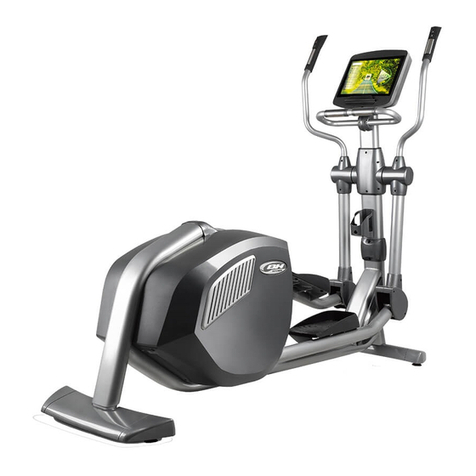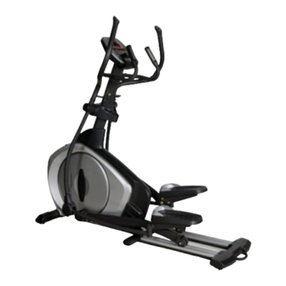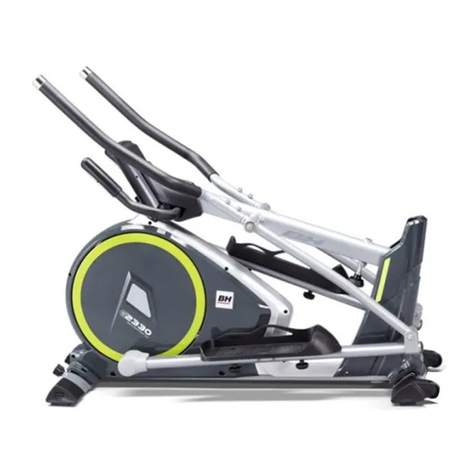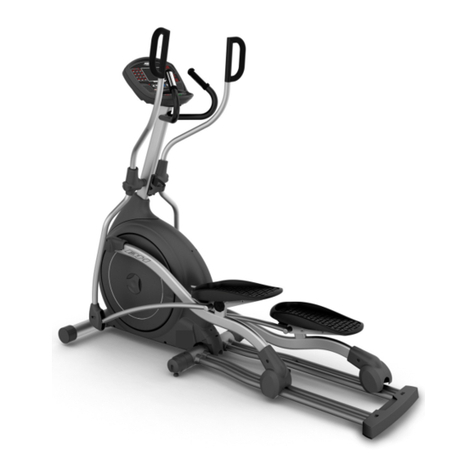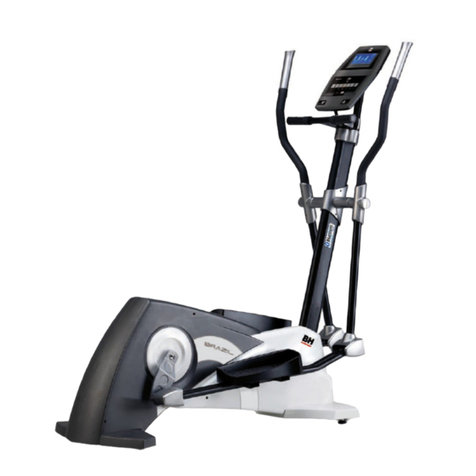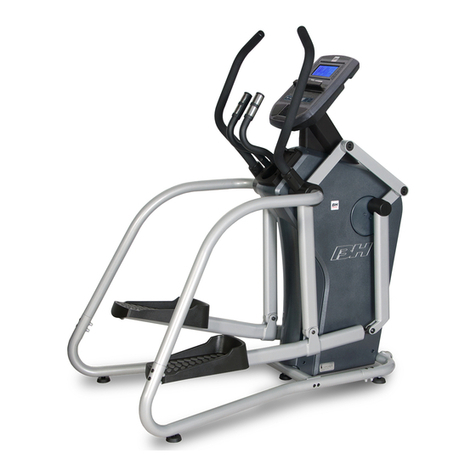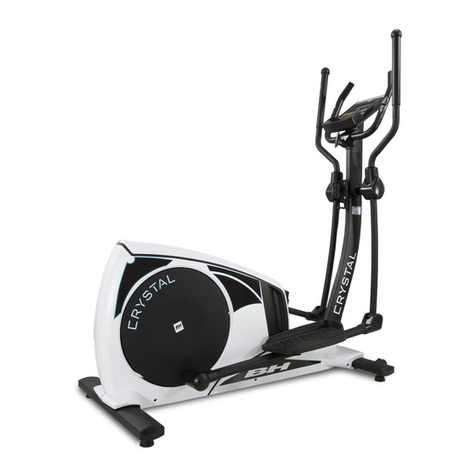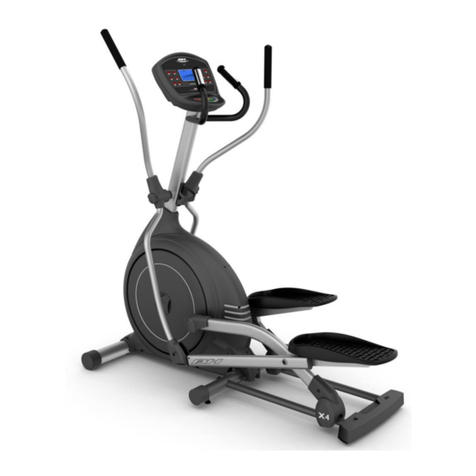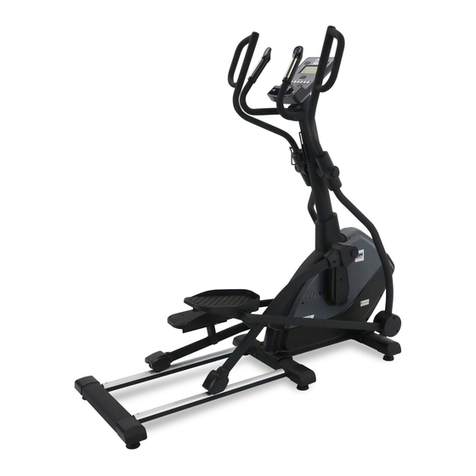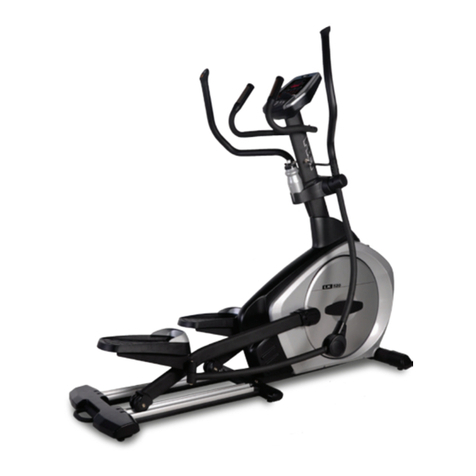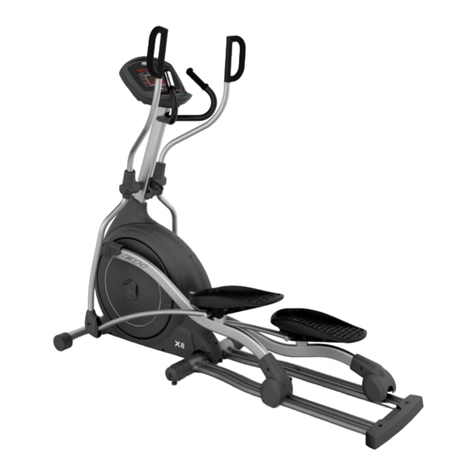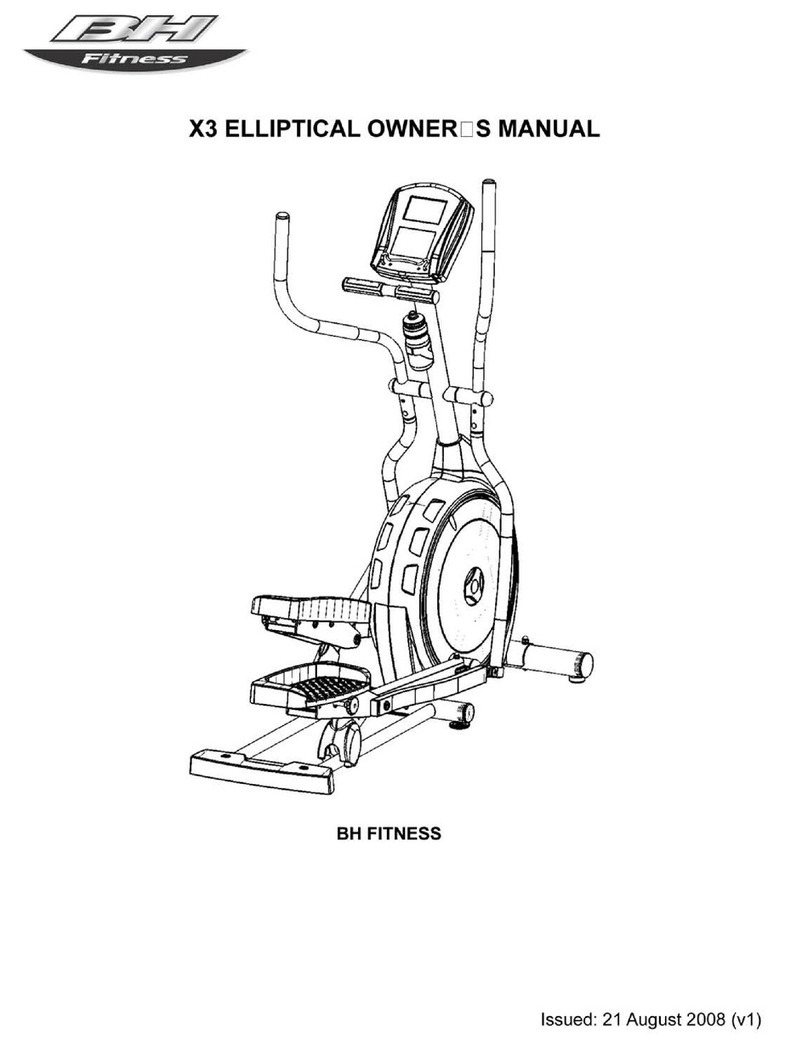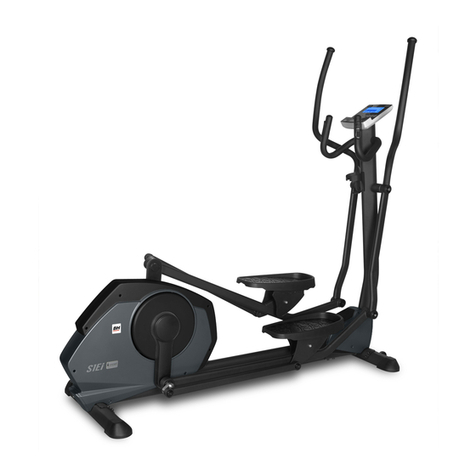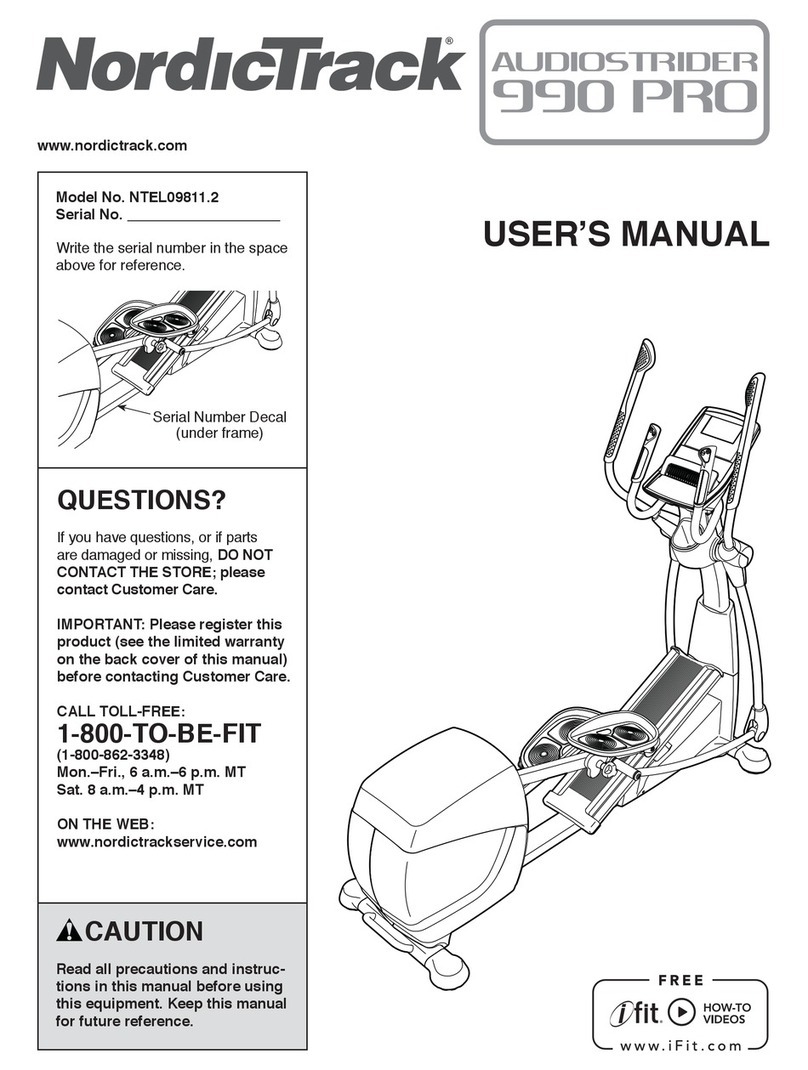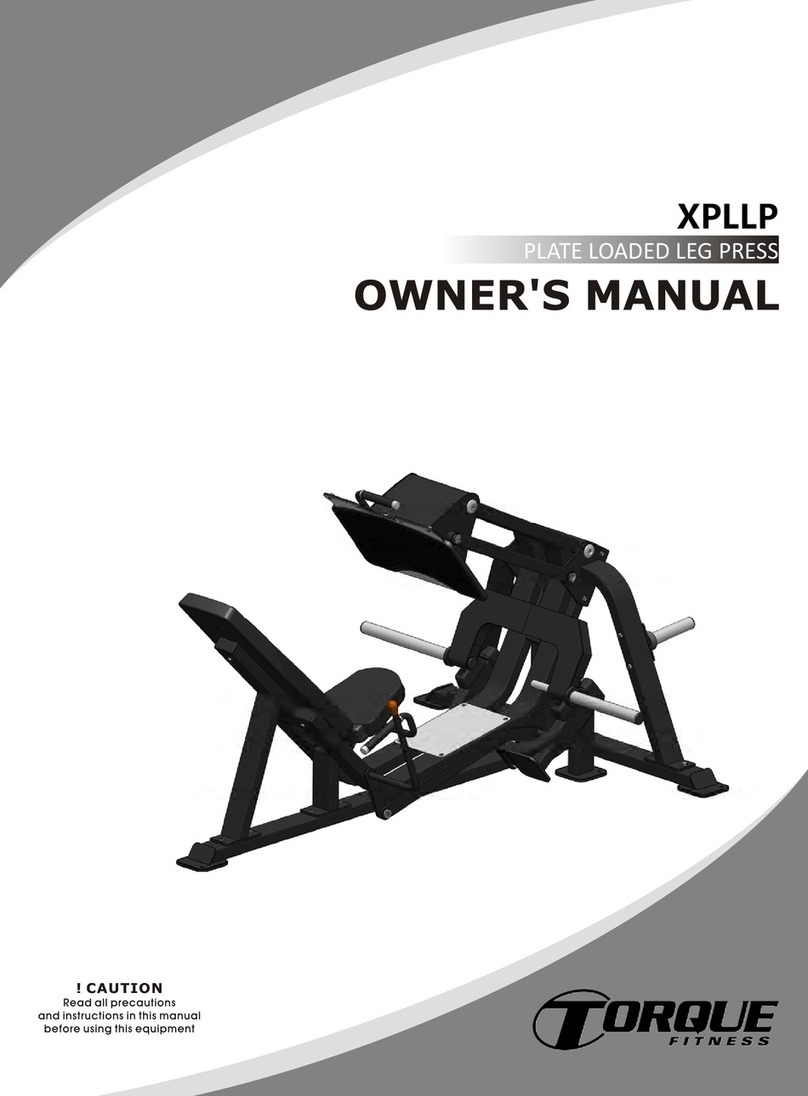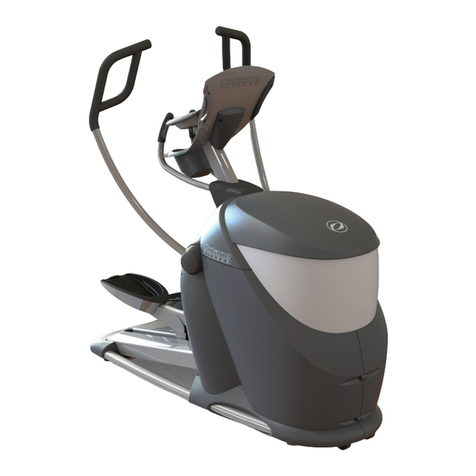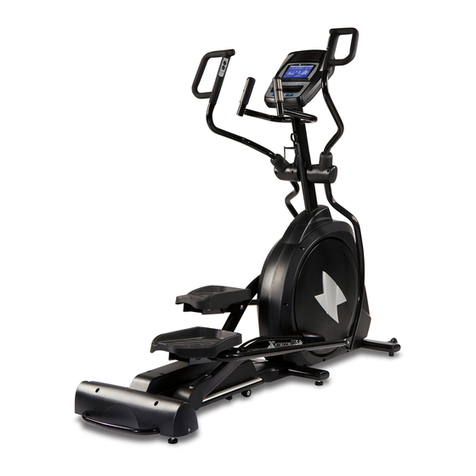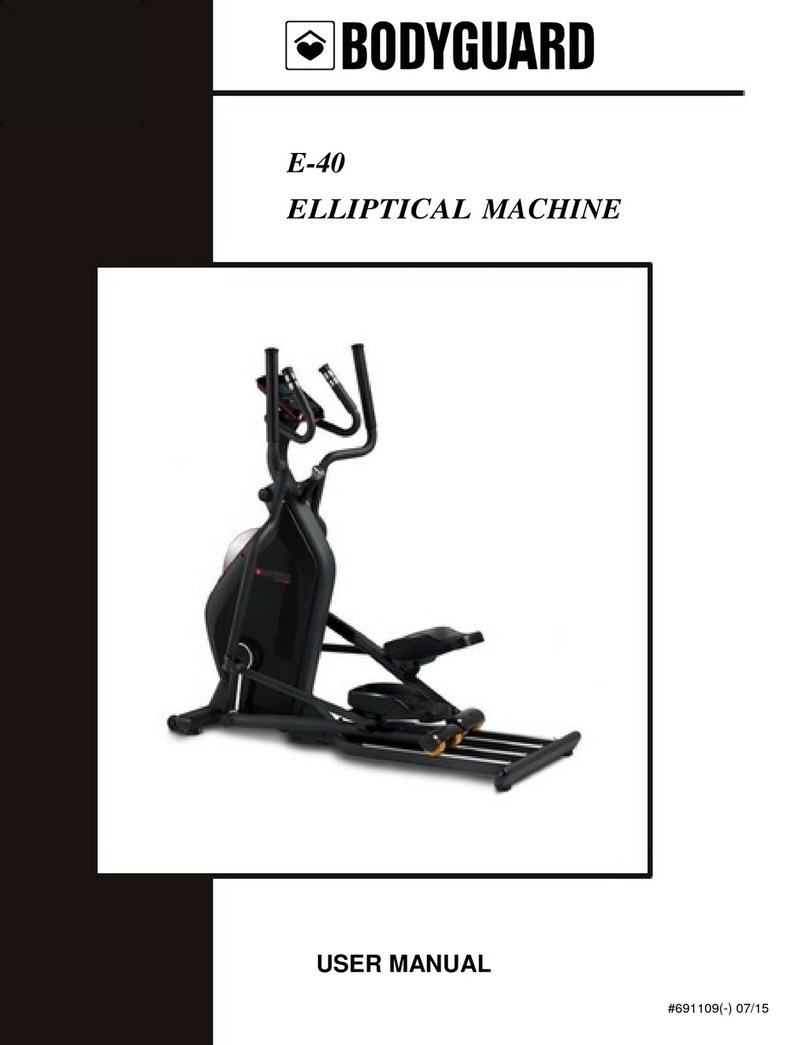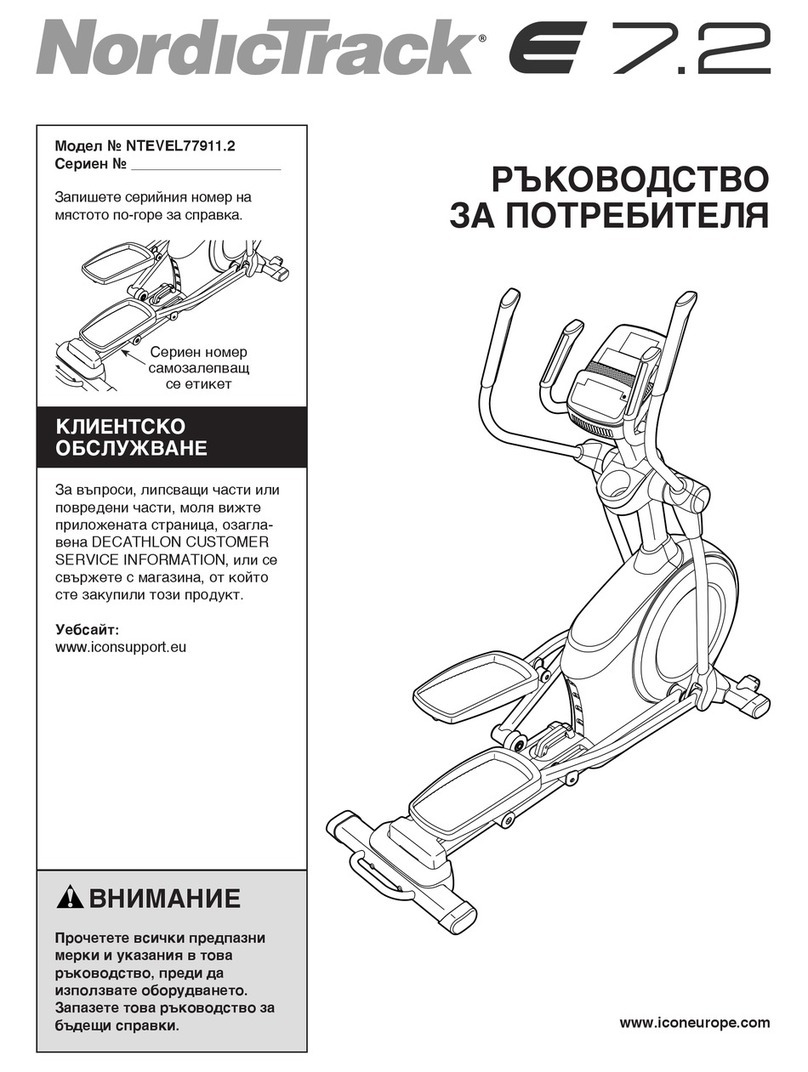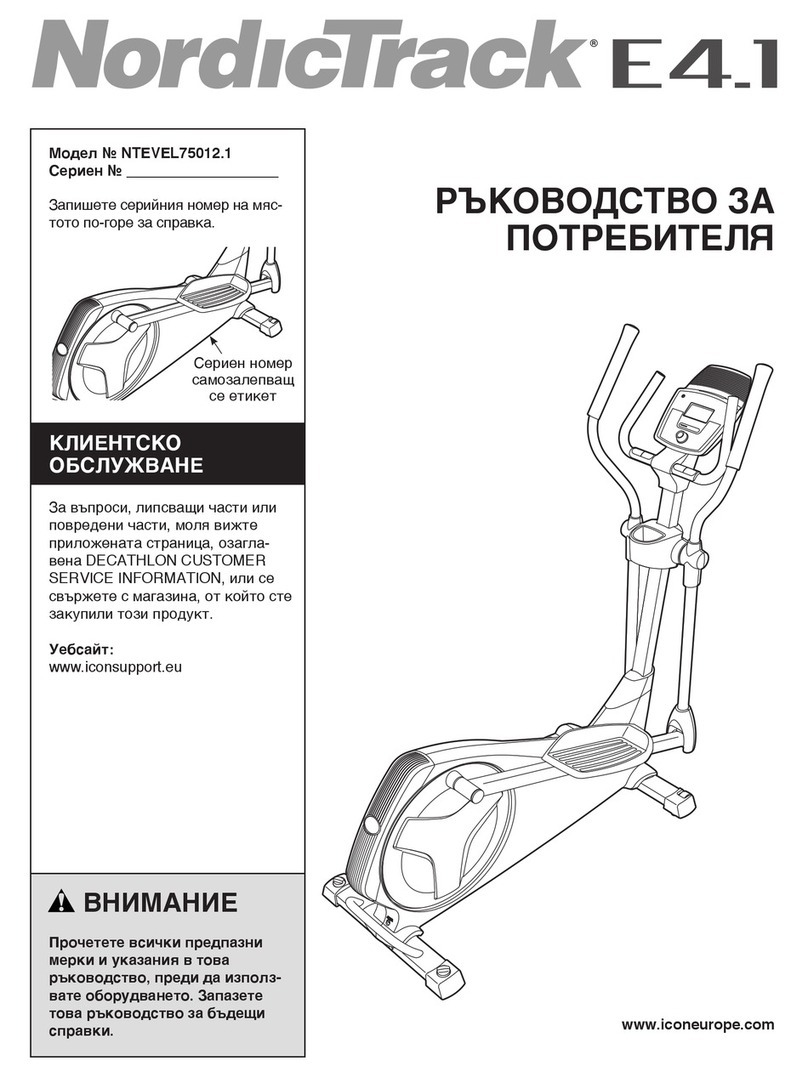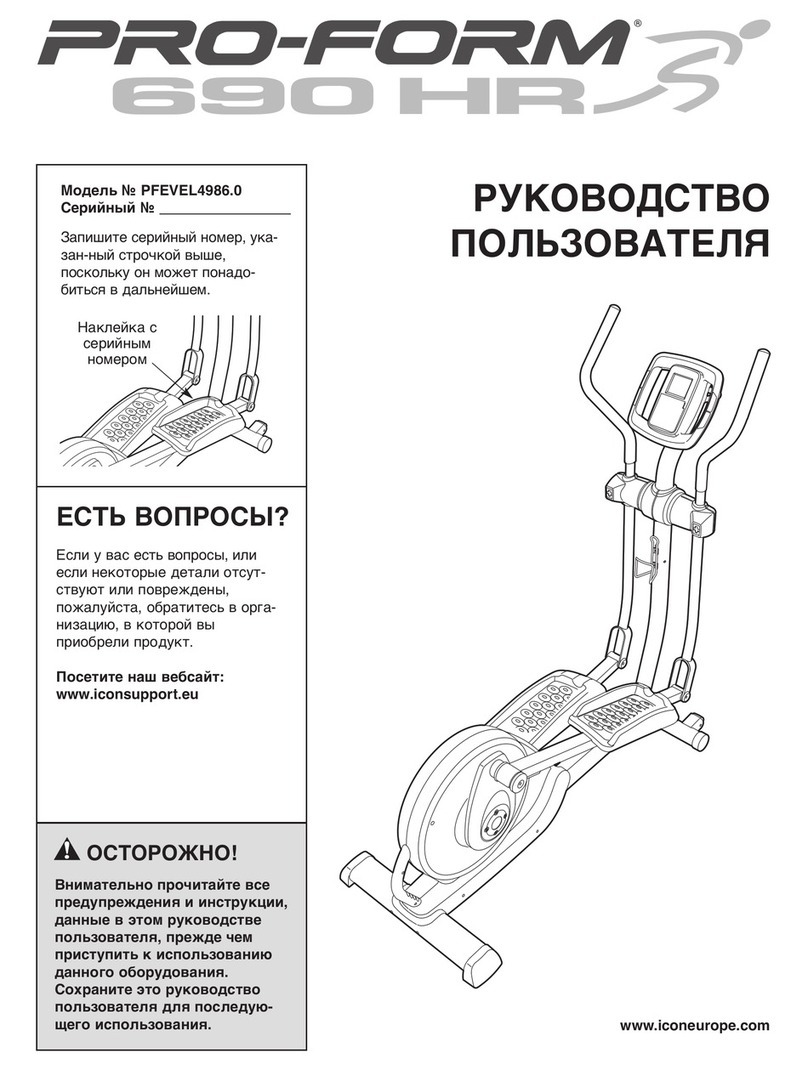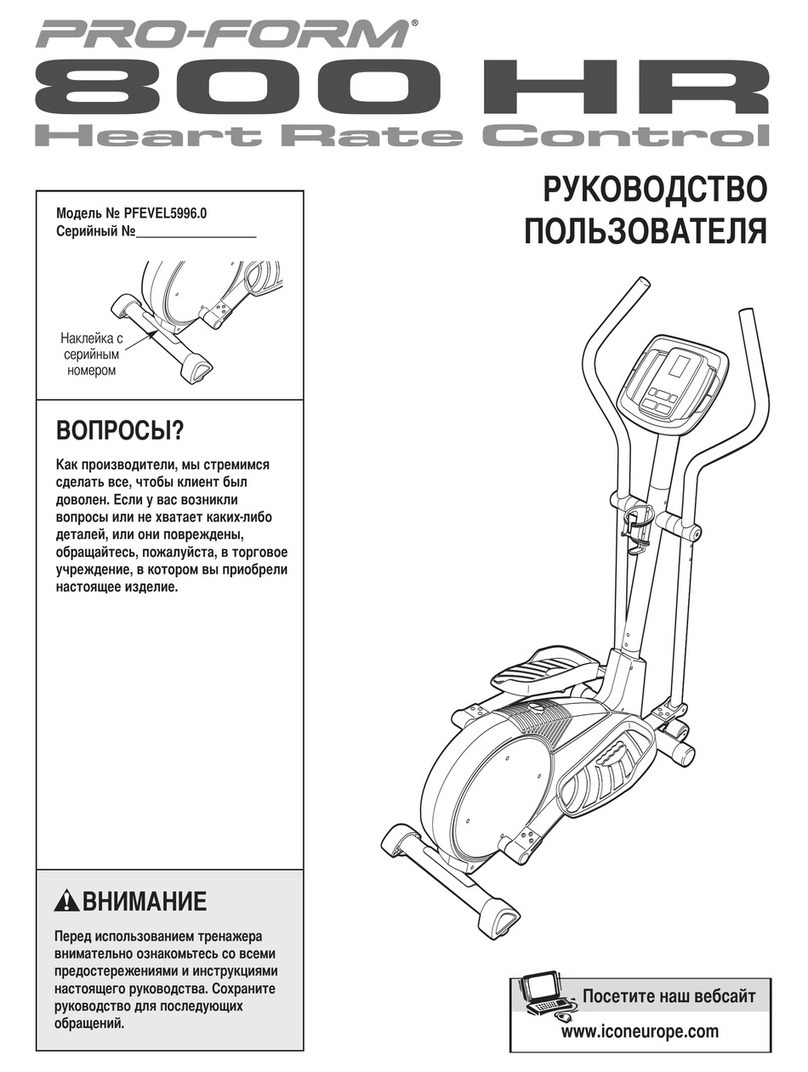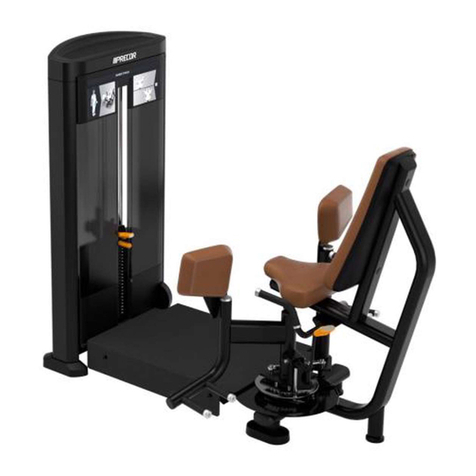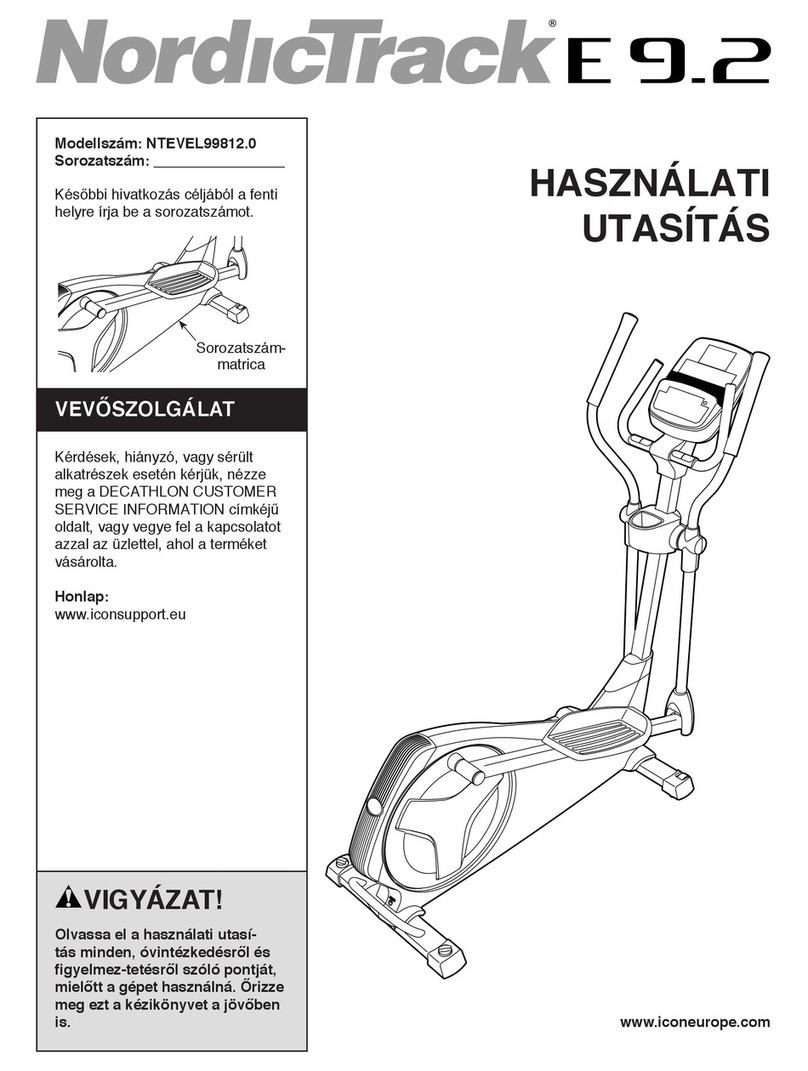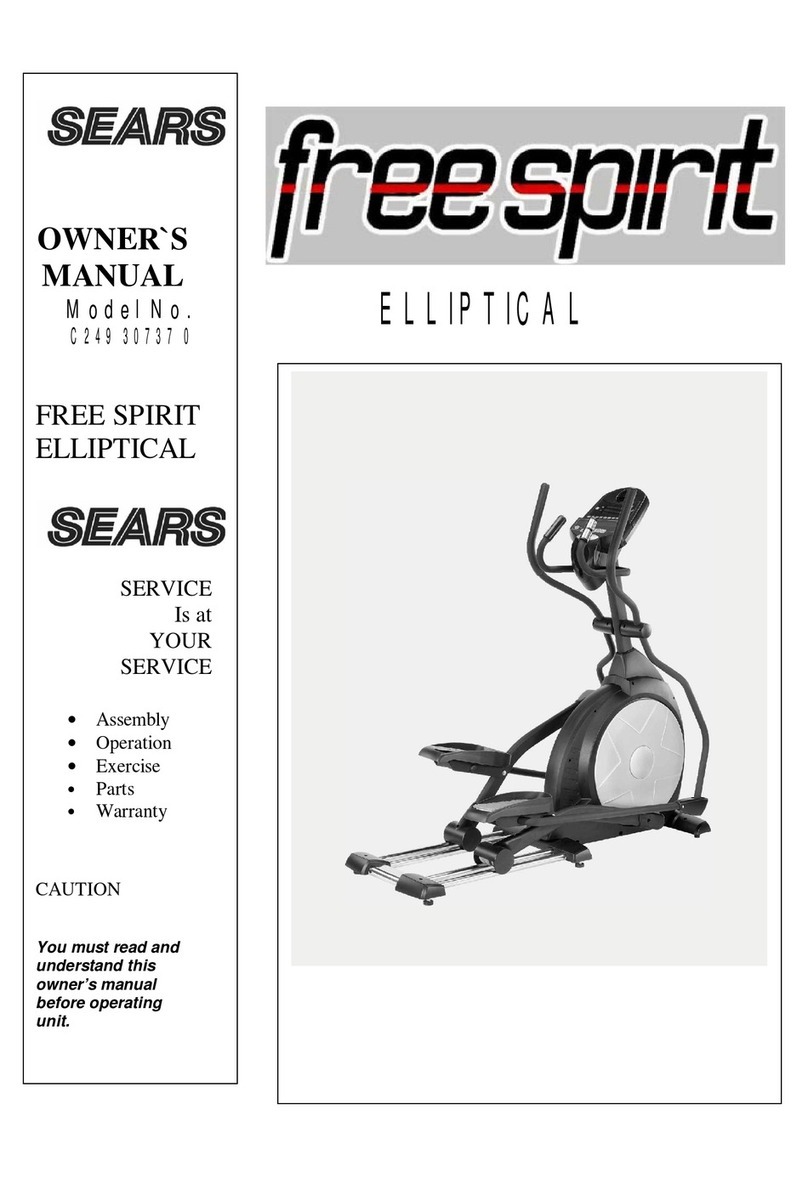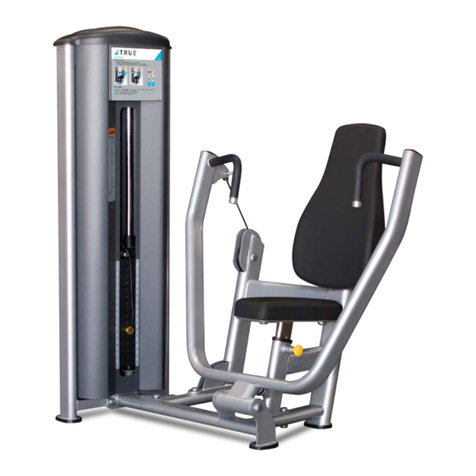
8 9
LK500UiB v3 LK500UiB v3
OXYGEN UPTAKE
e eort that you can exert over a prolonged period of time is limited by your ability to deliver
oxygen to the working muscles. Regular vigorous exercise produces a training eect that can increase
your aerobic capacity by as much as 20 to 30%. An increased VO2 Max indicates an increased ability
of the heart to pump blood, of the lungs to ventilate oxygen, and of the muscles to take up oxygen.
THE TRAINING THRESHOLD
is is the minimum level of exercise which is required to produce signicant improvements in any
physical tness parameter.
OVERLOAD
is is where you exercise above your comfort level. e intensity, duration and frequency of exercise
should be above the training threshold and should be gradually increased as the body adapts to the
increasing demands. As your tness level improves, the training threshold should rise. Working
through your program and gradually increasing the overload factor is important.
PROGRESSION
As you become more t, a higher intensity of exercise is required to create an overload and therefore
provide continued improvement.
SPECIFICS
Dierent forms of exercise produce dierent results. e type of exercise that is carried out is specic
to the muscle groups being used and to the energy source involved. ere is little transfer of the
eects of exercise, i.e. from strength training to cardiovascular tness. at is why it is important to
have an exercise program tailored to your specic needs.
REVERSIBILITY
If you stop exercising or do not do your program often enough, you will lose the benets you have
gained. Regular workouts are the key to success.
WARM-UP
Every exercise program should start with a warm-up where the body is prepared for the eort to
come. It should be gentle and preferably use the muscles group to be involved later. Stretching
should be included in both your warm-up and cool down, and should be performed after 3-5
minutes of low intensity aerobic activity or calisthenic type exercise.
WARM DOWN OR COOL DOWN
is involves a gradual decrease in the intensity of the exercise session. Following exercise, a large
supply of blood remains in the working muscles. If it is not returned promptly to the central
circulation, pooling of blood may occur in the muscles.
HEART RATE
As you exercise, your heart beat increases. is is often used as a measure of the required intensity of
an exercise. You need to exercise hard enough to condition your circulatory system, and increase your
pulse rate, but not enough to strain your heart.
Your initial level of tness is important when developing an exercise program for you. When starting,
you can get a good training eect with a heart rate of 110-120 beats per minute (BPM). If you are
more t, you will need a higher threshold of stimulation.
To begin with, you should exercise at a level that elevates your heart rate to about 65 to 70% of your
maximum. If you nd this is too easy, you may want to increase it, but it is better to lean on the
conservative side.
As a rule of thumb, the maximum heart rate is 220 minus your age. As you increase in age, your
heart, like other muscles, loses some of its eciency. Some of its natural loss is won back as tness
improves. e following table is a guide to those who are “starting tness.”
Age Target Heart Rate 25 30 35 40 45 50 55 60 65
10 Second Count 23 22 22 21 20 19 19 18 18
Beats per Minute 138 132 132 126 120 114 114 108 108
PULSE COUNT
e pulse count (on your wrist or carotid artery in the neck, taken with two index ngers) is done
for ten seconds, taken a few seconds after you stop exercising. is is for two reasons: (a) 10 seconds
is long enough for accuracy, (b) the pulse count is to approximate your BPM rate at the time you are
exercising. Since heart rate slows as you recover, a longer count isn’t as accurate.
e target is not a magic number, but a general guide. If you’re above average with your tness, you
may work comfortably a little above that suggested for your age group. e following table is a guide.
Age Target Heart Rate 25 30 35 40 45 50 55 60 65
10 Second Count 26 26 25 24 23 22 22 21 20
Beats per Minute 156 156 150 144 138 132 132 126 120
Don’t push yourself too hard to reach the gures on this table. It can be very uncomfortable if you
over exercise. Let it happen naturally as you work through your program. Remember, the target is a
guide, not a rule, a little above or below is just ne.
Two nal comments: (1) don’t be concerned with day to day variations in your pulse rate, being
under pressure or not enough sleep can aect it; (2) your pulse rate is a guide, don’t become a slave
to it.
